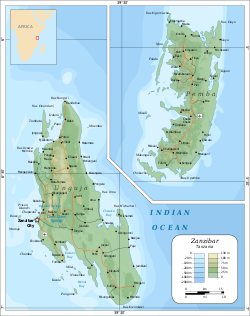Welcome toZanzibar
Unguja, Pemba, and Tumbatu are Zanzibar’s three main islands. The capital of this region is Stone Town, which is located on the western shore of Unguja Island. The many enormous multi-story “stone” buildings that fill the old town area gave the city its name. These constructions are made of coral and mortar rather than stone. In Zanzibar City’s Stone Town, there are currently about 1700 of these structures.
A total of 1100 of these have been designated as architecturally significant. There are 23 “Landmark Buildings,” two churches, over 50 Mosques, 157 balconies, verandahs and loggias, and more than 200 carved doors in this little area, which was originally a peninsula, virtually an island at times, and is only about 83 city blocks square. The United Nations has designated Zanzibar’s Stone Town as a “World Heritage Site.”
Zanzibar is definitely worth a visit because it is home to the world’s largest Swahili Stone Town. Tourists are now welcome in Zanzibar, and the infrastructure for visitors has improved dramatically in recent years. There are hotels and guest houses in every price level. From modest backpacker accommodations to opulent private islands, there is something for everyone. Stone Town is just 5 kilometers from an international airport, and several modern ferries now ply the short sea routes between the islands and the mainland.

InformationUseful information before coming to Tanzania
Climate
Zanzibar has a warm tropical environment with high temperatures and heavy humidity practically all year. The islands have two rainy seasons, with the longest and heaviest rain falling from March to May and the shortest rain falling from September to November. Temperatures are generally higher throughout the year, with an average of 25°C that can reach 39°C in February and 20°C in August.
Health and Safety
All visitors to Zanzibar are encouraged to have their vaccinations at least 36 hours before their departure from their home country. Yellow fever vaccination can be purchased at the major entry points in Tanzania if a traveler is unable to obtain it in his or her home country for whatever reason. It’s a good idea to be vaccinated against tetanus, polio, and diphtheria, as well as hepatitis A. Meningococcus and rabies vaccinations may also be suggested.
Travelling within Zanzibar
The private sector’s small businesses are mostly responsible for facilitating travel within Zanzibar. Shuttle services to and from the entry ports are provided by a number of firms. It’s worth noting that in order to use self-driving services, you must meet certain requirements, including having a valid international driver’s license. The majority of the roads are currently tarmac and are open all year. The left-hand driving model is used in Zanzibar.
Visa Requirements
A valid passport valid for at least 6 months from the date of entrance is necessary to enter Tanzania. Please make sure you have at least three blank pages for the entry and stamps. It is also necessary to have a valid return ticket. Visas are not required for British, Danish, Irish, Finnish, Icelandic, Kenyan, Norwegian, Singaporean, South African, Swedish, and Zimbabwean visitors. Consult your nearest Tanzania consulate for visa requirements for the rest of the world.
Money and Currencies
Tanzania uses shillings (Tanzania shillings) as its National Currency, which is both, notes and coins. Foreign currencies can be exchanged at the Bureaus, Banks and some Hotels. Credit cards including Traveler’s cheques are widely accepted in Zanzibar, most common Master Cards, Visa and America Express.
Clothes and Customs
Being situated near the equator Zanzibar is generally warm and humid throughout the year and as such it is advisable to wear light and decent clothes. In winter time along the beach, the condition may be relatively cooler and sometime windy. Sun glasses are recommended especially to the first time visitor.